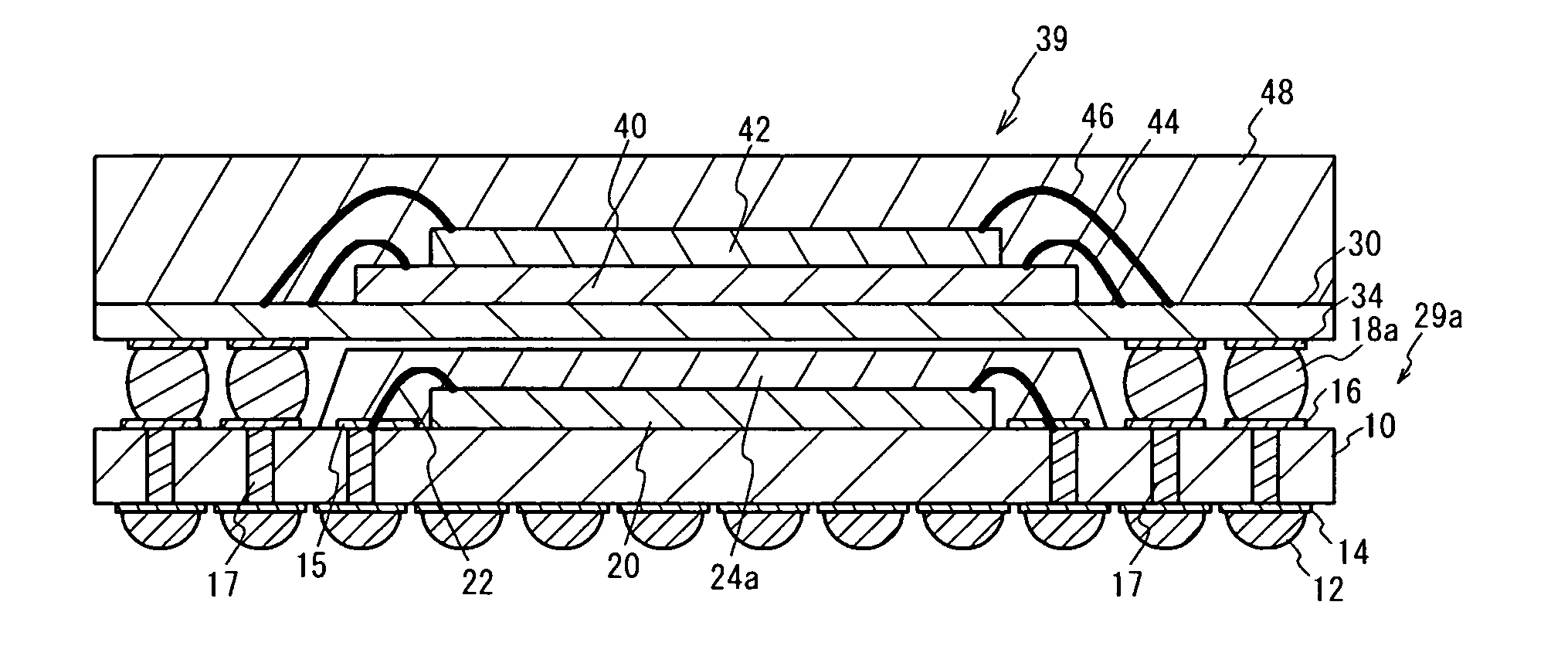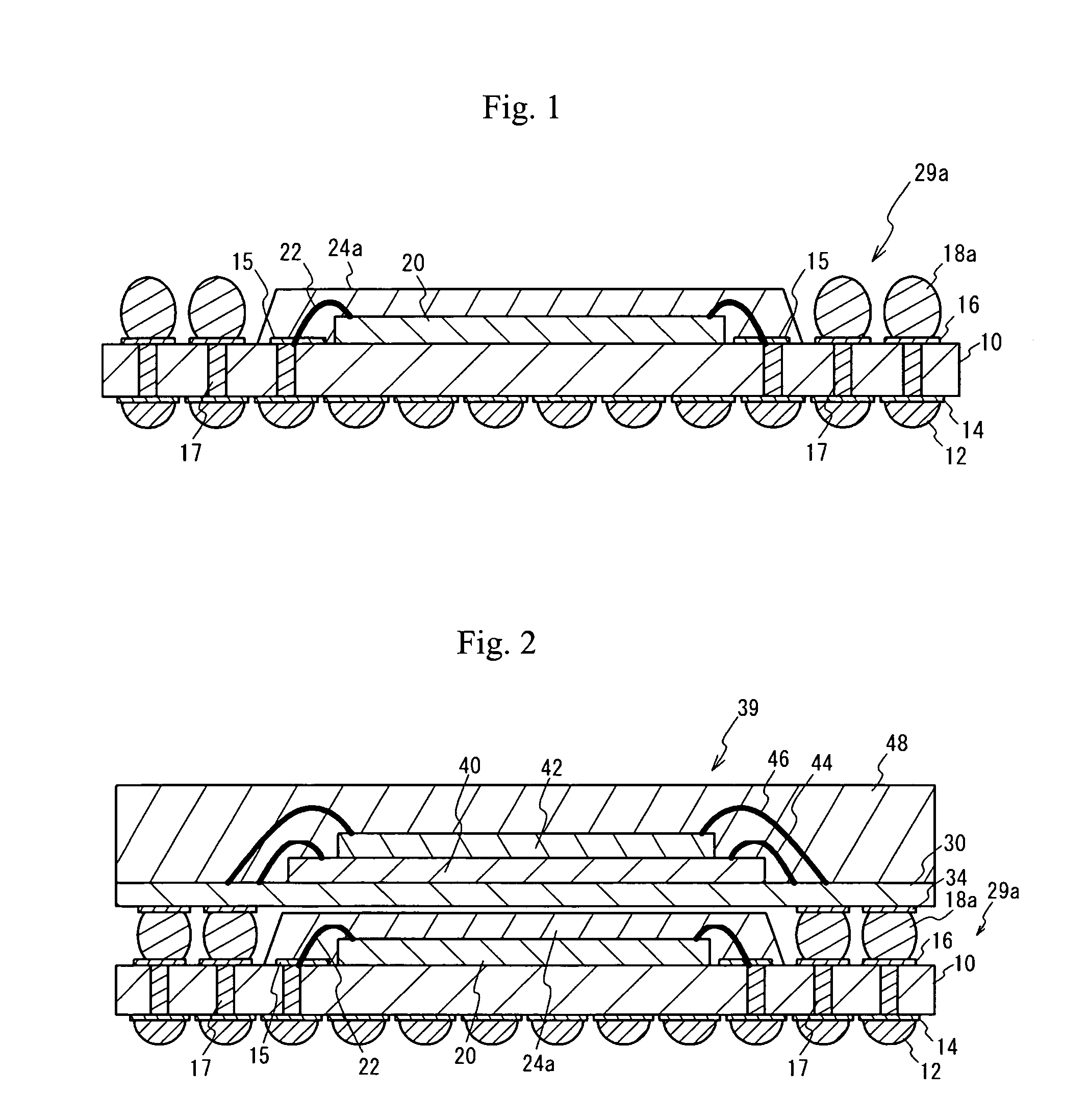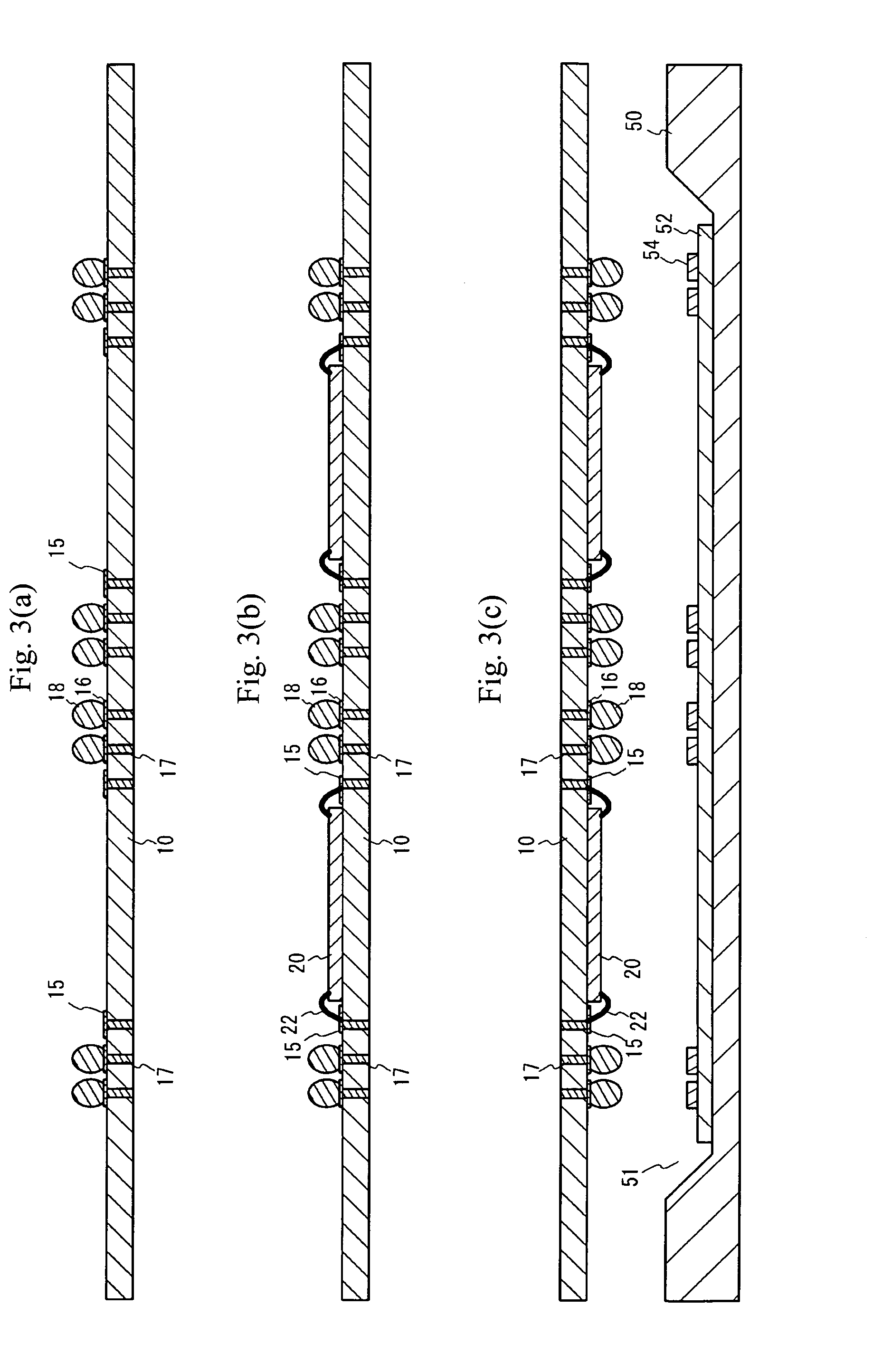Semiconductor device and method of fabricating the same
- Summary
- Abstract
- Description
- Claims
- Application Information
AI Technical Summary
Benefits of technology
Problems solved by technology
Method used
Image
Examples
first embodiment
[0040]A first embodiment is an exemplary built-in semiconductor device for stacking. A description is now given of a method of fabricating the semiconductor device of the first embodiment with reference to FIGS. 3(a) through 4(c). Multiple semiconductor chips are mounted on the wiring substrate 10 in a transverse direction. In FIGS. 3(a) through 4(c), only two semiconductor chips 20 are illustrated for the sake of simplicity. Referring to FIG. 3(a), the land electrodes 16 are formed on the wiring substrate 10 that may be a printed-circuit board made of glass epoxy resin. The semiconductor balls 18, which may be slightly higher than 300 μm, are formed on the land electrodes 16. Referring to FIG. 3(b), the semiconductor chips 20, which may be 100 μm thick, are mounted on the wiring substrate 10 by using an adhesive. The wires 22 are provided to make electrical connections between semiconductor chips 20 and the pads 15 on the wiring substrate 10. Referring to FIG. 3(c), a metal mold 50...
second embodiment
[0043]A second embodiment has an exemplary arrangement in which a semiconductor device is stacked on the built-in semiconductor device in accordance with the first embodiment. FIG. 6 is a cross-sectional view of a method of fabricating a semiconductor device in accordance with the second embodiment. One built-in semiconductor device of the first embodiment is arranged as a lower semiconductor device 29, and the upper semiconductor device 39 employed in the aforementioned related art is arranged on the lower semiconductor device 29. In this arrangement, solder balls 32 of the upper semiconductor device 39 are fit into the openings 25 formed in the resin seal portion 24 of the lower semiconductor device 29. Then, the lower semiconductor device 29 and the upper semiconductor device 39 are heated to melt the solder balls 18 and 32, so that the semiconductor device of the second embodiment can be completed.
[0044]FIG. 7 is a cross-sectional view of a semiconductor device in accordance wit...
third embodiment
[0053]A third embodiment is an exemplary device in which the solder balls 18 of the lower semiconductor device 29 are formed in a manner different from the above-mentioned manner. A description is now given, with reference to FIG. 8(a) through 9(b), of a method of fabricating a semiconductor device in accordance with the third embodiment. Referring to FIG. 8(a), the processes shown in FIGS. 3(a) and 3(b) in association with the first embodiment are carried out. Referring to FIG. 8(b), the metal mold 50 is disposed which has the molding portion 51 for shaping the resin seal portion 24 on the side of the wiring substrate 10 on which the semiconductor chip 20 is arranged. A sheet 53 that is softer than the solder balls 18 is arranged. Thermoset epoxy region 56 is given to the molding portion 51 of the metal mold 50 in an uncured state. The metal mold 50 is heated to approximately 175° C. to melt the epoxy resin. Referring to FIG. 8(c), the wiring substrate 10 and the metal mold 50 are ...
PUM
 Login to View More
Login to View More Abstract
Description
Claims
Application Information
 Login to View More
Login to View More - R&D
- Intellectual Property
- Life Sciences
- Materials
- Tech Scout
- Unparalleled Data Quality
- Higher Quality Content
- 60% Fewer Hallucinations
Browse by: Latest US Patents, China's latest patents, Technical Efficacy Thesaurus, Application Domain, Technology Topic, Popular Technical Reports.
© 2025 PatSnap. All rights reserved.Legal|Privacy policy|Modern Slavery Act Transparency Statement|Sitemap|About US| Contact US: help@patsnap.com



